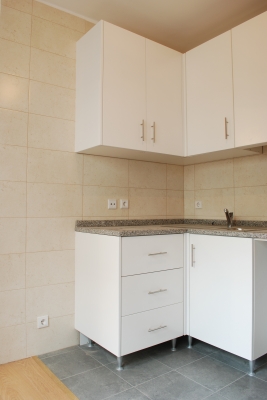Should You Buy Tile for Your Outdoor Kitchen or Patio?
 The idea of an outdoor kitchen or outdoor patio is appealing to many homeowners, and its popularity continues to grow by the year. One thing many homeowners fail to consider when designing their outdoor kitchen or patio is the material they will use for the floor. Will they use concrete, stone, decking, or simply leave the ground bare? A popular option is using tile for the flooring of an outdoor space.
The idea of an outdoor kitchen or outdoor patio is appealing to many homeowners, and its popularity continues to grow by the year. One thing many homeowners fail to consider when designing their outdoor kitchen or patio is the material they will use for the floor. Will they use concrete, stone, decking, or simply leave the ground bare? A popular option is using tile for the flooring of an outdoor space.
Tile has been used in indoor kitchens for years, and there is evidence of ancient civilizations using tile or similar building materials in constructing their outdoor spaces. Below are the benefits and drawbacks to outdoor tile:
Benefits:
- Durability. Tile is strong and durable, and if set properly will serve as a wonderful floor for your patio. It will last for as long as necessary and will not stain, rot, or decay. Even if cracked, tile can be fairly easily repaired.
- Weatherproof. Tile will withstand exposure to the elements without sustaining damage. Using certain types of tile, such as porcelain or natural stone, ensures low absorption of water. This is especially useful if you live in a climate where freezing temperatures frequently occur, as freezing water will not crack tile.
- Ease of cleaning. Tile is very easy to clean, requiring only sweeping and occasional scrubbing for maintenance. If you have outdoor tile, you can simply spray it off with a hose after every use and let it air dry.
- Appearance. Tile comes in a huge variety of colors, patterns, and styles that allow an incredible amount of creativity when designing your floor. After all, there is no reason why the floor of your patio or outdoor kitchen should not be both useful and attractive.
Drawbacks:
- Can be time consuming and complicated. Laying tile outdoors properly can include multiple steps and must be done right to be done well. You must first install a solid, flat, even base that will not shift. The most common and, perhaps, most effective method of doing this is pouring a layer of concrete thick enough to not be cracked or broken if the ground beneath it shifts, but thin enough to provide a suitably sized base for the tile. Once the concrete slab is laid, you can install the tile, which will require a lot of time if going the DIY route.
- Can be very costly. If you hire contractors to install a tile floor, you should have very good results, but will also likely have to pay a large sum of money for quality work.
- Can grow mold or mildew. If there are cracks between the tiles, water may seep through and cause mold or mildew between tiles, which will be difficult to clean.
- Needs a solid foundation. Without a good foundation installed beneath the tile, any shift in the ground may cause the grout between tiles to crack and fit improperly against one another.
If you have any questions or concerns about installing tile flooring in outdoor settings, contact Sunwood Home Builders and Remodelers for answers, advice, quotes, or installations.






